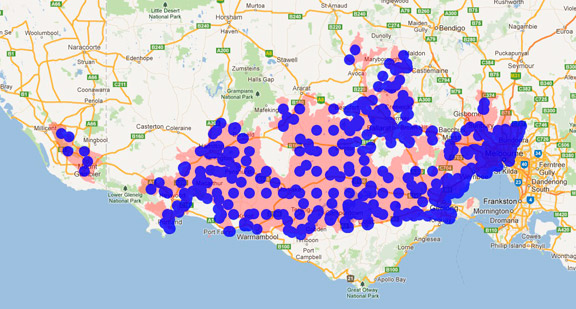A range of teacher professional learning programs will be developed to accompany the Biodiversity of the Western Volcanic Plains online outreach...




Australian White Ibis
Threskiornis molucca
Breeding season is between June and November in southern Australia. This species breeds in large colonies alongside herons, egrets and spoonbills. Rough, loose platforms are built in trees standing in water. Two to five eggs are produced and incubated by both sexes. Incubation time is 20-23 days. One or two broods may be raised each year.
| Details | Description |
| Type | Bird |
| Group | Ibis |
| Other Common Names | Sacred Ibis |
| Identifying Characteristics | |
| Distinctive Markings | During the breeding season, the small patch of skin on the undersurface of the wing changes from a dull pink to a dark scarlet. |
| Diet | Omnivore, terrestrial and aquatic invertebrates including crayfish and mussels, also human scraps. |
| Habitat | Shallow fresh and tidal wetland and pasture. |
| Native Status | Native to Australia |
| Sounds | A deep grunted "urrrk". |
| Taxonomy | |
| Phylum | Chordata |
| Class | Aves |
| Order | Ciconiiformes |
| Family | Threskiornithidae |
| Genus | Threskiornis |
| Species | molucca |

Distribution maps indicate current and historic locations where species have been sighted.
Source: Atlas of Living Australia
| Conservation Status | |
| DEPI Advisory List | Not listed |
| FFG Act | Not listed |
| EPBC Act | Not listed |
The conservation status of species is listed within Victoria and Australia.
The Department of Environment and Primary Industry (DEPI) Advisory List consists of non-statutory advisory lists of rare or threatened flora and fauna within Victoria.
The Flora and Fauna Guarantee Act 1988 (FFG Act) lists threatened species in Victoria. Under the Act, an Action Statement is produced for each listed species.
The Environment Protection and Biodiversity Conservation Act 1999 (EPBC Act) is the Australian Government’s key piece of environmental legislation, listing nationally threatened native species and ecological communities.



